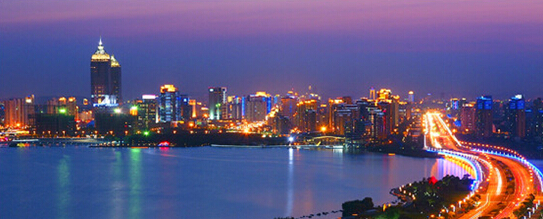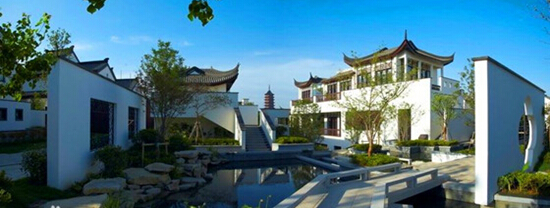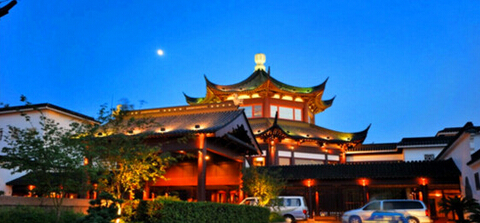Suzhou
Updated:2015-12-08
Suzhou, formerly known as Soochow, is a major city in the southeast of Jiangsu province in East China, adjacent to Shanghai. The city is on the lower reaches of the Yangtze River and on the shores of Taihu Lake and is a part of the Yangtze River Delta region. Administratively, Suzhou is a prefecture-level city with an urban population of over 4 million in its core districts expanding to over 10 million in the administrative area. It is considered one of the richest major cities in China.

Originally founded in 514 BC, Suzhou has over 2,500 years of rich history, and relics of the past are abundant to this day. Circa AD 100, during the Eastern Han Dynasty, it became one of the 10 largest cities in the world due to immigration. Since the 10th-century Song Dynasty, it has been an important commercial center of China. During the Ming and Qing dynasties, Suzhou was the nation's economic, cultural and commercial center, as well as the largest non-capital city in the world, until the 1860 Taiping Rebellion.
The city's canals, stone bridges, pagodas, and meticulously designed gardens have contributed to its status as one of the top tourist attractions in China. The classical gardens in Suzhou were added to the list of the UNESCO World Heritage Sites in 1997 and 2000. Suzhou is often dubbed the "Venice of the East" or "Venice of China".
More and more Chinese and foreign people came here to visit, travel and work. It also attracts many foreign students to study in Suzhou. If you are looking to study Engineering, Business, Chinese and Medicine, Suzhou is a good option for you.

Location
It is situated by the Taihu Lake in the southern part of Jiangsu province, in the Yangtze River Delta. With Shanghai to its east and Zhejiang Province to its south, Suzhou has a well-developed communication network and can be easily reached from all parts of China.
Of the 8,488 square kilometers of territory under the city's jurisdiction, about 10 percent is cultivated farmland; 30 percent is hilly land, and the rest is covered by waters or low terrains. Its average altitude is 4 meters above sea level. The city is famed as the Oriental Venice because it is a water city with numerous rivers, lakes and canals, such as the Yangtze River, Yangcheng Lake, Chenghu Lake and the Grand Canal. Major hills in the area include Lingyan, Tianping, Tiger (Huqiu) and Yushan.
Climate
On the north edge of the subtropical zone, Suzhou has monsoon maritime climate, with mildly cold winter and humid summer. Its annual average temperature is 15.7°C.

Economy
Suzhou is currently one of the fastest growing cities in China and one of the important economic centers in the Yangtze River delta economic circle.
The city owes a port which is the largest inland river in China and the largest port in Jiangsu. Transportation in Suzhou is very convenient. Railway and highway transportation network extending in all directions and in major cities across the country are linked together.
In terms of economic aggregate, its economic output (GDP) in 2014 reached 1.386 trillion yuan.
History & Culture
Originally founded in 514 BC, Suzhou has over 2,500 years of history, and relics of the past are abundant to this day. Circa AD 100, during the Eastern Han Dynasty, it became one of the ten largest cities in the world due to immigration. Since the 10th-century Song Dynasty, it has been an important commercial center of China. During the Ming and Qing Dynasty, Suzhou was the nation's economic, cultural and commercial center, as well as the largest non-capital city in the world, until the 1860 Taiping Rebellion.
Suzhou is a paradise for gourmets, with hundreds of years of culinary experimentation. Suzhou cuisine is light in taste and sweeter than neighboring Yangzhou's Huaiyang Cuisine. Each course is individually prepared and the emphasis is on the use of quality ingredients and attention to detail meaning the dishes are all unique in color, aroma, shape and taste.

